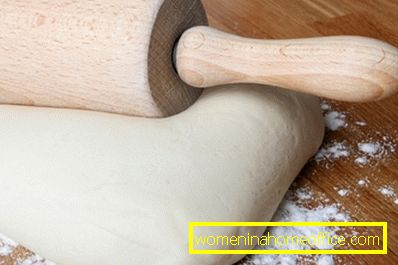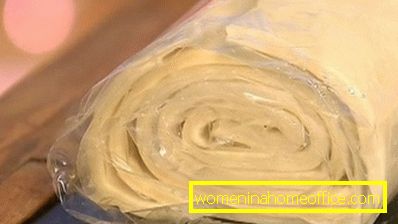Is it possible to freeze the yeast dough
Any housewife loves to pamper her family with delicious and fragrant pastries. But sometimes in the manufacture of yeast dough it happens that there is a surplus or there is a need to prepare it for future use. What to do in this case? Experienced housewives are advised to freeze the dough.
By the way, it is possible to freeze not only the dough, but also already formed products. Frozen dough can significantly save time, you can use it at any convenient time. It’s not worth worrying about the fact that the dough will lose its properties and the pastries will turn out to be tasteless - if you follow all the rules for freezing, your buns and cakes will be delicious!
Dough freezing rules and storage temperature

If you decide to freeze the dough and do not know how to do it, you can use the advice of experienced housewives.
Yeast dough freezing process:
- Immediately after kneading, the dough should be divided into portions and sent to the freezer.
- Pre-pack it in cling film, foil, or plastic bag to limit moisture.
- Sprinkle flour to freeze the container so that the dough does not stick.
- The temperature in the freezer is first desirable to set to a minimum and bring the product to a state of deep freezing (usually -20 ° or -30 °), and after the dough has frozen, gradually change to -10 °, -18 °.
For convenience, some hostesses freeze the yeast dough directly into the baking mold, wrapping it tightly with aluminum foil.
How much is the yeast dough stored in the fridge?

You can freeze the dough for a period of not more than 4 months, otherwise it will lose its properties. But in order for your dough to successfully “overwinter”, and the products made of it are fluffy and appetizing, you need to take into account two important factors:
- flour quality;
- amount of yeast.
The quality of the flour plays a very important role in the frozen dough: it is good to use flour that has an increased level of protein or wheat gluten content. If in the dough gluten is small, then after defrosting it will become less tensile and will have a vague shape. Conversely, if the flour is too saturated with gluten, then the finished products will have a sufficiently dense crumb and swollen crust.
Another important ingredient is yeast. If, by kneading the dough, you already know that you are subjecting it to freezing, you will need to add more yeast than usual. For example, instead of 6-7 g, add, say, 9 -11 g. While preparing the dough for freezing, it is better to use slow-acting yeast, since in some cases low temperatures affect their properties. Ideally, the dough should not rise more than an hour before freezing, otherwise there is a risk that the finished product will not be very lush.
How to defrost the dough?

Not less significant stage - defrosting. Thaw the dough gradually. In order to save time, some housewives defrost the yeast dough in warm water, after placing it in a plastic bag. The dough, thawed in this way, will be ready in a few hours.
The process of defrosting yeast dough:
- First, it should be taken out of the freezer and placed on the lower shelf in the refrigerator, and then thawed at room temperature.
- The dough should rise as soon as it completely thaws.
- Never start the oven from the dough, which only got out of the refrigerator: it must necessarily warm up to room temperature.
- As soon as you notice that it has approached, crush it once and boldly shape the buns.
Some advise using a microwave for quick defrosting, because now even in the simplest oven there is such a function. If the defrost function is not, then you need to set the oven to 80-100 watts. Just do it very carefully: even with a slight overheating, the dough will begin to prepare. By the way, experienced chefs do not welcome this method of defrosting: it is believed that yeast may lose its properties.
In general, the best way to defrost is natural, that is, at room temperature. If all the rules are followed, then you can easily cook any dish from frozen yeast dough.
It is impossible to freeze the yeast dough again - its properties are completely lost.
Is it possible to freeze yeast dough for pies?

There is an opinion that it is better to bake pizza or buns from frozen dough, but the pies are not always successful. In fact, from the frozen yeast dough, you can bake all that from the usual: cakes, buns, pizza. Moreover, many hostesses freeze even already finished products. Only when baking, frozen pies should be immediately put into a hot oven without defrosting. And if, after all, baking has failed, then it is possible that you have picked up not quite high-quality flour or yeast.
Experienced housewives share another secret: in order for the pies from the frozen dough to turn out just as lush, you need to freeze it after the first punch.
Of course, nowadays, shops offer just a huge assortment of convenience foods, including frozen yeast dough. And if the time to pamper your family with fresh pastries is categorically not enough, then you can use the already finished products. But remember that the store dough contains preservatives, and homemade will be natural. Therefore, it is better to make one evening, cook the dough and freeze it for a couple of months. Simple and tasty. Cook with pleasure!